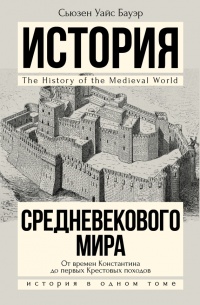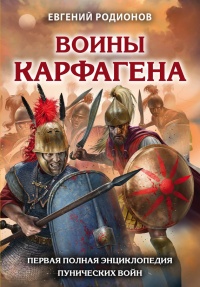Читать книгу "История Древнего мира. От истоков цивилизации до падения Рима - Сьюзен Уайс Бауэр"
Шрифт:
Интервал:
Закладка:
8. Ibid., p. 85.
9. Lewis, pp. 245–246.
10. van Dijk, p. 306.
11. Lewis, p. 247.
12. Ibid., p. 252.
13. Ibid., p. 254.
14. Clayton, p. 168.
Большой папирус Харриса (он же «Харрис-500» или «Папирус № 9999») – хранящийся в Британском музее в Лондоне древний свиток времен Двадцатой династии (царствование Рамзеса III и Рамзеса IV). Назван так по имени британского коллекционера Энтони Чарльза Харриса. Имеет в длину более 41 метра, несет около полутора тысяч строк. Содержит краткий обзор царствования Рамзеса II. (Прим. ред.)
15. See van Dijk, p. 308, а также: Lewis, p. 265.
16. Clayton, p. 171.
ГЛАВА СОРОКОВАЯ. ТЕМНЫЕ ВЕКА ГРЕЦИИ
1. Taylour, p. 159.
2. Morkot, p. 46.
3. Herodotus, 5.76.
4. Konon, Narratives, Sec. 26, in The Narratives of Konon: Text Translation and Commentary of the Diegesis by Malcolm Brown (2003).
5. Thucydides, 1.12.2–4.
6. Taylour, p. 161.
7. E. Watson Williams, «The End of an Epoch», Greece & Rome, 2d series, 9:2 (1962), pp. 119–120.
8. Philip P. Betancourt, «The Aegean and the Origin of the Sea Peoples», in The Sea Peoples and Their World: A Reassessment, ed. Eliezer D. Oren (2000), p. 300.
9. Homer, The Iliad, 1.12–14, translated by Robert Fitzgerald (1974).
10. Williams, p. 117.
11. Quoted in Williams, p. 112.
ГЛАВА СОРОК ПЕРВАЯ. ТЕМНЫЕ ВЕКА МЕСОПОТАМИИ
1. Translated by H. Otten in the journal Mitteilungen des deutschen Orientgesellschaft 94 (1963), p. 21, and quoted in Redford, Egypt, p. 254.
2. Roaf, p. 149.
3. A. T. Olmstead, «Tiglath-Pileser I and His Wars», Journal of the American Oriental Society 37 (1917), p. 170.
4. J. N. Postgate, «The Land of Assur and the Yoke of Assur», World Archaeology 23:3 (1992), p. 255.
5. Luckenbill, Ancient Records, vol. 1, p. 83.
6. Olmstead, «Tiglath-Pileser I and His Wars», p. 186.
7. Leick, Mesopotamia, p. 212.
8. Olmstead, «Tiglath-Pileser I and His Wars», p. 180.
9. W. G. Lambert, «Studies in Marduk», Bulletin of the School of Oriental and African Studies, University of London 47:1 (1984), p. 4.
10. Postgate, p. 249.
11. J. A. Brinkman, «Foreign Relations of Babylonia from 1600 to 625 BC: The Documentary Evidence», American Journal of Archaeology 76:3 (1972), p. 276.
12. Quoted in Leick, Mesopotamia, p. 254.
ГЛАВА СОРОК ВТОРАЯ. ПАДЕНИЕ ШАН
1. J. A. G. Roberts, p. 10.
2. Ch’ien, p. 51.
3. Mencius, Mencius, translated by D. C. Lau (1970), p. 172.
4. Ibid., p. 26.
5. J. A. G. Roberts, p. 13.
6. Cotterell, China, p. 28.
ГЛАВА СОРОК ТРЕТЬЯ. МАНДАТ НЕБА
1. Tsui Chi, A Short History of Chinese Civilisation (1942), p. 47.
2. Ch’ien, p. 64.
3. Cotterell, China, p. 42.
4. Claudio Cioffi-Revilla and David Lai, «War and Politics in Ancient China, 2700 BC to 722 BC: Measurement and Comparative Analysis». Journal of Conflict Resolution 39:3 (1995), p. 473.
5. Constance A. Cook, «Wealth and the Western Zhou», Bulletin of the School of Oriental and African Studies, University of London 60:2 (1997), pp. 254–275.
6. Ch’ien, p. 63.
7. Ibid., p. 62.
8. Li Xueqin, Eastern Zhou and Qin Civilizations (1985), p. 16.
9. Sarah Allan, «Drought, Human Sacrifice and the Mandate of Heaven in a Lost Text from the ‘Shang Shu’, «Bulletin of the School of Oriental and African Studies, University of London 47:3 (1984), p. 533.
10. Edward L. Shaughnessy, «Western Zhou History», in The Cambridge History of Ancient China: From the Origins of Civilization to 221 BC, ed. Michael Loewe and Edward L. Shaughnessy (1999),
p. 311; а также: Xueqin, p. 16.
11. Об этом рассказано в «Шань-шу»; см. Shaughnessy, «Western Zhou History», p. 314.
12. Цит. по: Shaughnessy, «Western Zhou History», p. 322.
13. Ibid.
14. Ch’ien, p. 66.
15. Слегка перефразировано из: Ch’ien, p. 68.
16. Ibid.
ГЛАВА СОРОК ЧЕТВЕРТАЯ. ВОЙНА БХАРАТЫ
1. Kulke and Rothermund, p. 36.
2. Keay, p. 40.
3. Wolpert, p. 37.
4. Keay, pp. 3–4.
5. Chakravarthi V. Narasimhan, trans., The Mahabharata: An English Version Based on Selected Verses (1998), pp. 14–15.
6. Wolpert, p. 30.
7. Narasimhan, p. 34.
8. Kulke and Rothermund, p. 44.
9. Keay, p. 43.
10. Narasimhan, p. 44.
11. Ibid., p. 47.
12. Wolpert, p. 30.
13. Keay, p. 41.
14. Wolpert, p. 36.
ГЛАВА СОРОК ПЯТАЯ. СЫН ДАВИДА
1. Josh. 1:4, New International Version (hereafter NIV).
2. Pellegrino, p. 256.
3. Josh. 13:2–4, NIV.
4. Judg. 15:11, NIV.
5. Judg. 16:30, NIV.
6. 1 Sam. 8:11–18, NIV.
7. 1 Sam. 13:19–21, NIV.
8. 1 Sam. 17:51–52, NIV.
9. Dimitri Baramki, Phoenicia and the Phoenicians (1961), p. 25.
10. 1 Kings 4:22–26, NIV.
11. E. W. Heaton, Solomon’s New Men: The Emergence of Ancient Israel as a National State (1974),
р. 34.
12. 1 Kings 10:1–2, 13, NIV.
13. Robert G. Hoyland, Arabia and the Arabs: From the Bronze Age to the Coming of Islam (2001),
p. 13.
14. Ibid., p. 38.
15. 1 Kings 9:11, NIV.
16. Homer, The Iliad, Book 9, 460–469, translated by Samuel Butler (1898).
17. Clayton, p. 184.
18. 1 Kings 14:25–27, NIV.
ГЛАВА СОРОК ШЕСТАЯ. ОТ ЗАПАДНОГО К ВОСТОЧНОМУ ЧЖОУ
1. Shaughnessy, «Western Zhou History», p. 324.
Внимание!
Сайт сохраняет куки вашего браузера. Вы сможете в любой момент сделать закладку и продолжить прочтение книги «История Древнего мира. От истоков цивилизации до падения Рима - Сьюзен Уайс Бауэр», после закрытия браузера.




